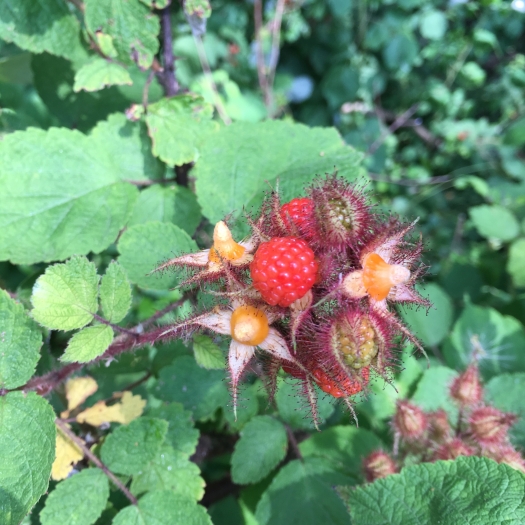Japanese Wineberry
(Rubus phoenicolasius)
Japanese Wineberry (Rubus phoenicolasius)
/
/

Ryan Hearty
CC BY 4.0




















Estimated Native Range
Summary
Japanese wineberry is valued for its sweet fruits, which are used in pies, jams, and other desserts. It is also appreciated for its ornamental qualities, such as the attractive bristly stems and the calyx that encloses the fruit. In cultivation, it prefers moist, well-drained soil and can thrive in partial shade, making it suitable for woodland gardens and naturalized areas. However, it requires careful management due to its potential invasiveness. It can spread aggressively by rooting at the cane tips and by seed dispersal. Gardeners should be aware of its invasive nature and take steps to control its spread.CC BY-SA 4.0
Plant Description
- Plant Type: Shrub, Vine
- Height: 3-4 feet
- Width: 4-8 feet
- Growth Rate: Rapid
- Flower Color: Pink
- Flowering Season: Spring, Summer
- Leaf Retention: Deciduous
Growth Requirements
- Sun: Full Sun, Part Shade
- Water: Medium
- Drainage: Medium, Slow
Common Uses
Bird Garden, Butterfly Garden, Edible*Disclaimer: Easyscape's listed plant edibility is for informational use. Always verify the safety and proper identification of any plant before consumption., Groundcover
Natural Habitat
Originally native to forest margins, slopes, and clearings in China, Japan, and Korea
Other Names
Common Names: Wineberry, Wine Raspberry, Japanese Wineberry
Scientific Names: , Rubus phoenicolasius, Rubus hydrastifolius var. tomentosus, Rubus phoenicolasius f. albiflorus, Rubus phoenicolasius f. albiflorus, Rubus phoenicolasius f. aureiceps, Rubus phoenicolasius var. albiflorus, Rubus phoenicolasius var. albiflorus, Rubus phoenicolasius var. aureiceps, Rubus phoenicolasius var. concolor
GBIF Accepted Name: